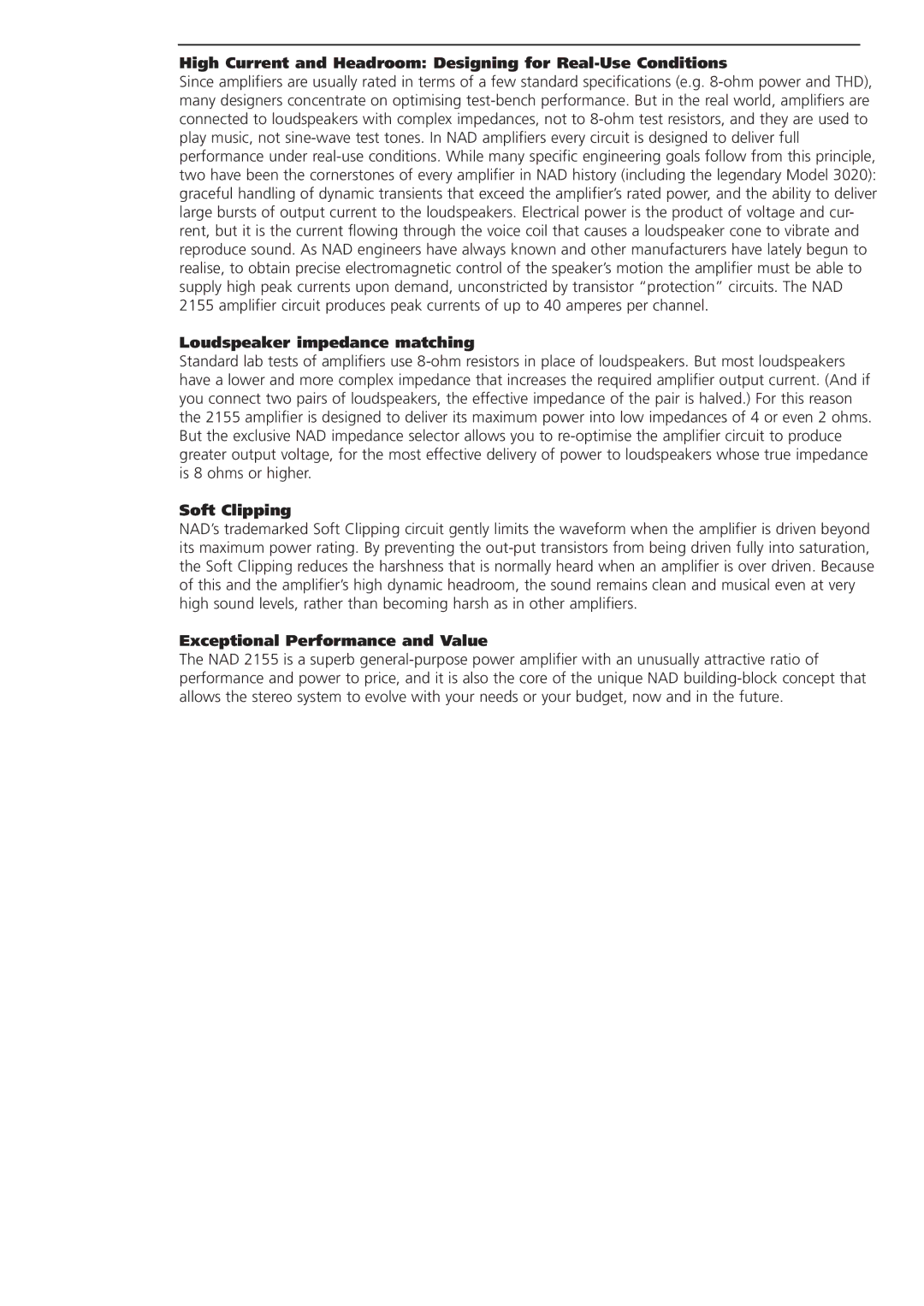2155 specifications
NAD 2155 is a noteworthy product in the realm of audio amplification, recognized for its exceptional performance and user-friendly design. It is a powerful stereo receiver that integrates a range of advanced technologies to deliver high-quality sound. The NAD 2155 is particularly well-regarded for its versatility, making it suitable for both casual listeners and audiophiles alike.One of the standout features of the NAD 2155 is its robust power output. It is designed to provide significant wattage per channel, ensuring that even demanding speakers receive adequate power for optimal performance. This power capability allows the NAD 2155 to handle dynamic musical passages without distortion, providing a rich, full-bodied sound that enhances the listening experience.
In terms of technology, the NAD 2155 employs Pulse Width Modulation (PWM) in its amplifier design. This allows for more efficient power management, resulting in less heat generation compared to traditional linear amplifiers. As a result, the NAD 2155 operates cooler and can maintain consistent performance even during long listening sessions.
Moreover, the receiver features a high-quality Digital-to-Analog Converter (DAC) that improves the clarity and detail of audio playback. This component is crucial for ensuring that digital music sources are translated into sound with precision, enhancing the overall sound fidelity. The NAD 2155 supports various inputs, including HDMI, optical, and coaxial connections, making it compatible with a broad range of modern audio devices.
Another aspect that sets the NAD 2155 apart is its intuitive interface. The front panel is equipped with easy-to-navigate controls, allowing users to adjust settings seamlessly. An included remote control further enhances convenience, providing access to all features from a distance.
The NAD 2155 also emphasizes build quality. Constructed with durable materials, the chassis minimizes vibration and interference, which contributes to clearer sound reproduction. Its design is both sleek and functional, allowing it to blend seamlessly into any home entertainment setup.
Overall, the NAD 2155 is a versatile, powerful, and well-designed audio receiver that caters to a variety of listening preferences, making it a valuable addition to any audio setup.
